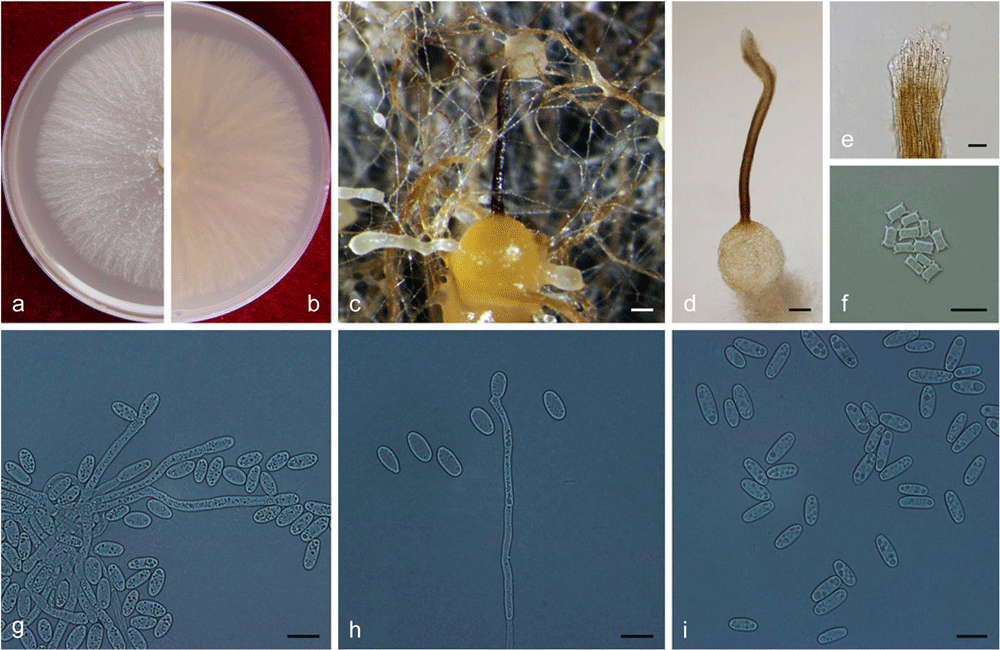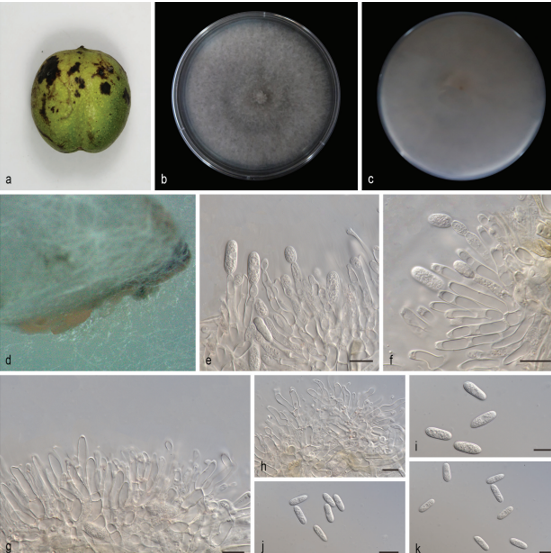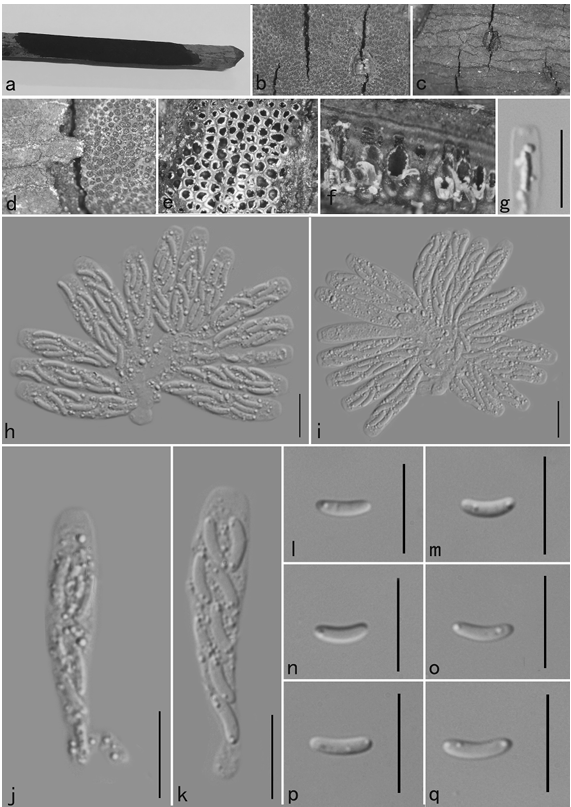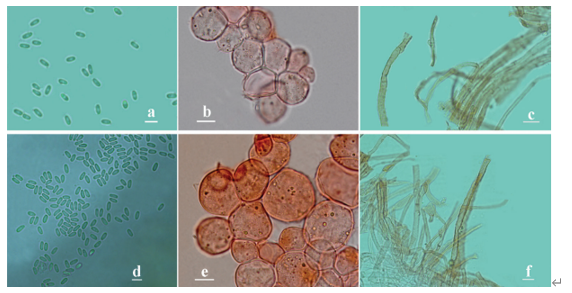Ophiostoma pseudobicolor Z. Wang & Q. Lu 2020
MycoBank MB 830615
Holotype: China: Inner Mongolia Autonomous Region, Genhe, from Ips subelongatus infesting Larix gmelinii, Sept. 2017, Q. Lu
Morphological description
Sexual morph perithecial. Perithecia developing on 2% MEA at 25 °C after 15 d from superficial or embedded mycelium, superficial or partly embedded in the agar medium, with the base globose, subhyaline to yellow orange, (309–) 350–480 (− 536) μm diam., extending into a filiform neck; bases globose, prolonged by a cylindrical, straight or slightly curved, occasionally twinning neck, black (663–) 754–1100 (1358) μm long, (33–) 55– 77 (− 79) μm wide at the base down to (43–) 49–68 (− 77) μm wide at the apex, composed of densely packed septate hyphae with a parallel orientation. Ostiolar hyphae absent. Ascospores hyaline, elliptical to oblong with obtuse ends in side and face view, circular in pole view, surrounded by a thick, hyaline gelatinous sheath appearing ossiform in side and face views, quadrangular with flanged corners in the end view, aseptate, (5.5–) 6–6.5 (− 7) × (3–) 3.5–4 (− 4.5) μm, included sheath. Asexual morph: hyalorhinocladiella-like. Hyalorhinocladiella-like morph: conidiogenous cells arising directly from the hyphae, (14–) 21.5–43.5 (− 60.5) × (2–) 2.5–4 (− 4.5) μm. Conidia hyaline, smooth, cylindrical, aseptate, (8.5–) 10–12 (− 13) × (4–) 4.5–5.5 (− 6) μm. Cultures: Colonies on 2% MEA at 25 °C, fast growing, reaching 80mm diam. in 5 d, effuse, cottony, hyaline to white at first, becoming white gray or gray brown; hyphae submerged in agar with many aerial mycelium. Optimal temperature for growth at 30 °C, no growth observed at 5 °C or 40 °C.
Habitat: L. gmelinii, L. olgensis or L. principis-rupprechtii pure plantation.
Ecology: Isolated from Ips subelongatus infesting dying Larix gmelinii, L. olgensis and L. principis-rupprechtii.
Distribution: Inner Mongolia Autonomous Region and Heilongjiang province, China.
GenBank Accession: ITS/LSU MK748188; β-tubulin gene MN896043
Notes: Ophiostoma pseudobicolor is the closest phylogenetic relative to O. bicolor. Morphologically, these two species differ by the size of their perithecia, with globose bases ranging from (308–) 350–480 (− 536) μm in O. pseudobicolor vs. 175–350 (− 365) μm in O. bicolor (Upadhyay 1981). The necks of O. pseudobicolor are more robust than those of O. bicolor, especially at the apex [viz. (43–) 49–68 (− 77) μm vs. 15–42 (− 50) μm].
Reference: Wang Z, Liu Y, Wang HM et al. (2020) Ophiostomatoid fungi associated with Ips subelongatus, including eight new species from northeastern China

Ophiostoma pseudobicolor. Morphological characteristics of O. pseudobicolor (CFCC 52683). a–b. Five-day-old cultures on 2% MEA; c–d. Perithecium. e. Apex of perithecium. f. Ascospores. g–i. Hyalorhinocladiella-like asexual morph: conidiogenous cells and conidia. Scale bars: c–d = 100 μm; e = 20 μm; f–i = 10 μm









